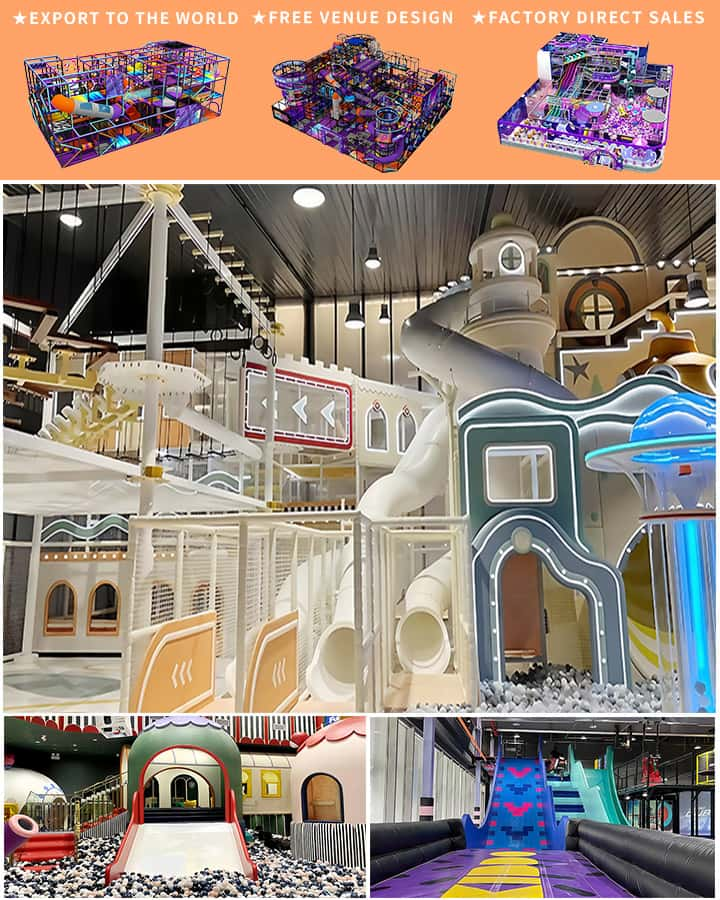In today’s fast-paced world, finding ways to keep children entertained and engaged at home can be a challenge. With screen time often serving as the default option, parents are increasingly seeking alternative, creative solutions. One highly effective idea is to create an indoor playground for kids. This not only provides endless hours of entertainment but also promotes physical activity, creativity, and developmental growth. Here are some fun and safe ideas to help you transform your living space into a delightful indoor playground.
1. Soft Play Area
The cornerstone of any indoor playground is a soft play area. This is essential for ensuring safety while allowing children to explore and play freely. Consider investing in high-quality foam mats or interlocking foam tiles that you can arrange in various configurations. These mats provide cushioning to prevent injuries and can be used to create different zones for activities like climbing, jumping, and rolling.
Add-Ons for the Soft Play Area:
- Play Gym: A small play gym with hanging toys and textured surfaces can stimulate sensory development and encourage tummy time for younger infants.
- Obstacle Course: Use tunnels, mini slides, and climbing blocks to create an engaging obstacle course. Make sure all equipment is age-appropriate and securely assembled to avoid accidents.
2. Creative Corner
A dedicated creative corner can nurture your child’s artistic talents and imagination. Set up a table with art supplies such as crayons, markers, colored pencils, paint, and playdough. Surround the area with large sheets of paper or a whiteboard wall that can be easily cleaned and reused.
Creative Corner Enhancements:

- Dress-Up Station: Include a rack with costumes, hats, and accessories for imaginative dress-up games, fostering creativity and social skills.
- Reading Nook: Create a cozy reading nook with comfortable seating, soft lighting, and a selection of age-appropriate books. This can become a quiet retreat where kids can dive into stories and expand their literary horizons.
3. Interactive Learning Wall
An interactive learning wall can be both educational and entertaining. This wall can feature a variety of elements that teach letters, numbers, shapes, and more through tactile and visual interaction.
Learning Wall Ideas:
- Magnetic Board: Install a magnetic board where children can attach letter magnets, number magnets, or picture magnets. This helps with early literacy and numeracy skills.
- Touch & Feel Panels: Incorporate panels with different textures (smooth, rough, bumpy) to enhance sensory exploration.
4. Physical Activity Zone
Encouraging physical activity is crucial for children’s health and well-being. Designate an area for active play that includes both structured and unstructured activities.
Physical Activity Zone Ideas:
- Mini Trampoline: A small, enclosed trampoline can provide endless jumping fun while improving coordination and balance.
- Balance Beams & Rings: Set up balance beams or rings to create a mini indoor gymnasium where kids can practice their motor skills and strength.
5. Imaginative Play Space
Children thrive on imaginative play, which allows them to explore different roles and scenarios. Designating a specific area for imaginative play can inspire countless adventures.
Imaginative Play Space Essentials:
- Dollhouse or Fort: A dollhouse or a fort made from blankets and pillows offers a perfect backdrop for storytelling and role-playing.
- Toy Kitchen or Workshop: Set up a play kitchen or workshop where children can engage in pretend cooking or building projects, encouraging social interaction and problem-solving.
Safety First!
While creating an indoor playground, safety should always be a top priority. Ensure that all materials used are non-toxic and free of small parts that could pose choking hazards. Regularly inspect all equipment for wear and tear, and supervise children closely during playtime to prevent accidents.
Conclusion
Transforming a part of your home into an indoor playground for kids is a fantastic way to provide a stimulating environment that combines fun, learning, and physical activity. By incorporating these ideas—from soft play areas to creative corners and interactive learning walls—you can create a space where your children will happily spend hours exploring, playing, and developing essential skills. Happy crafting and playing!




